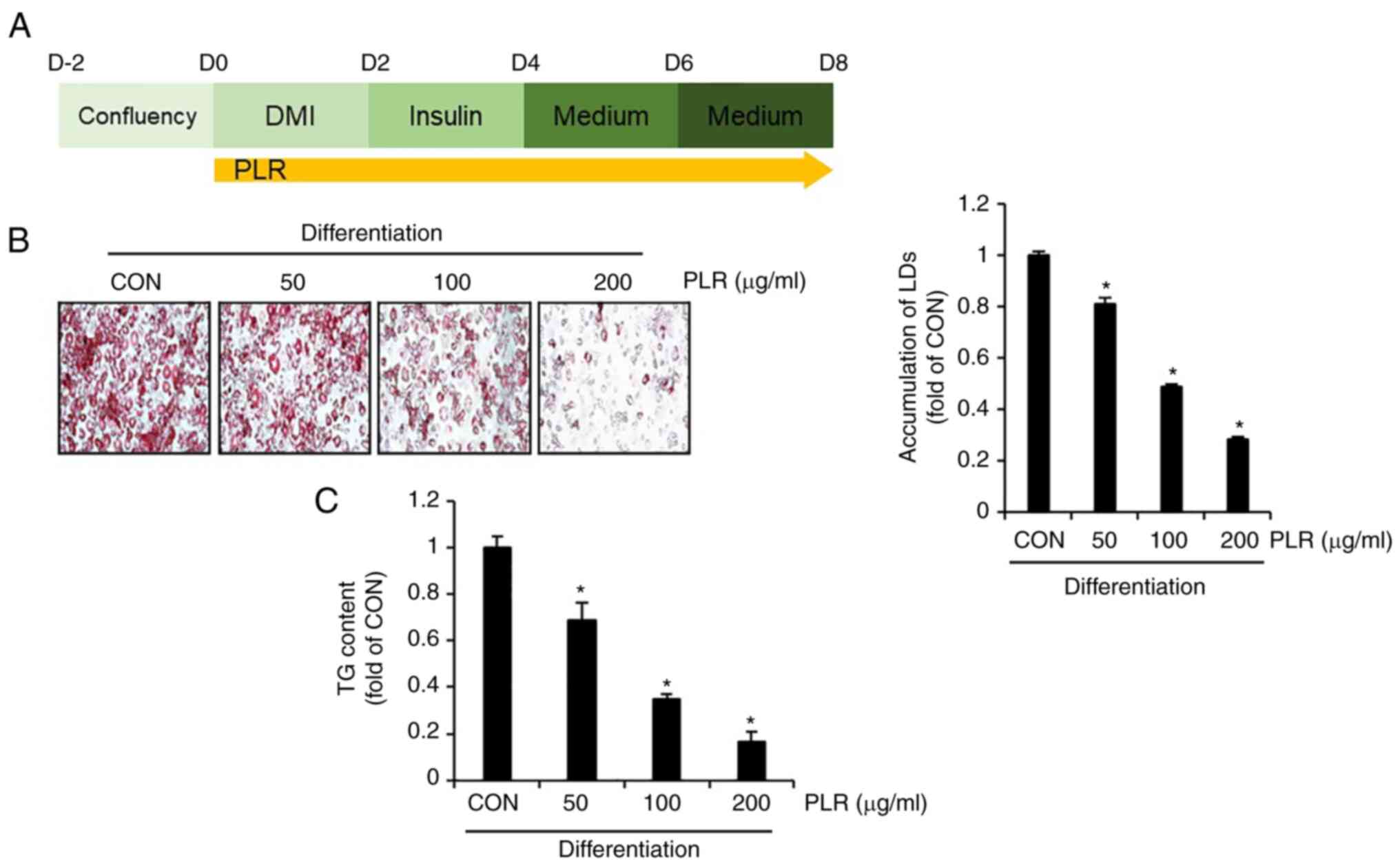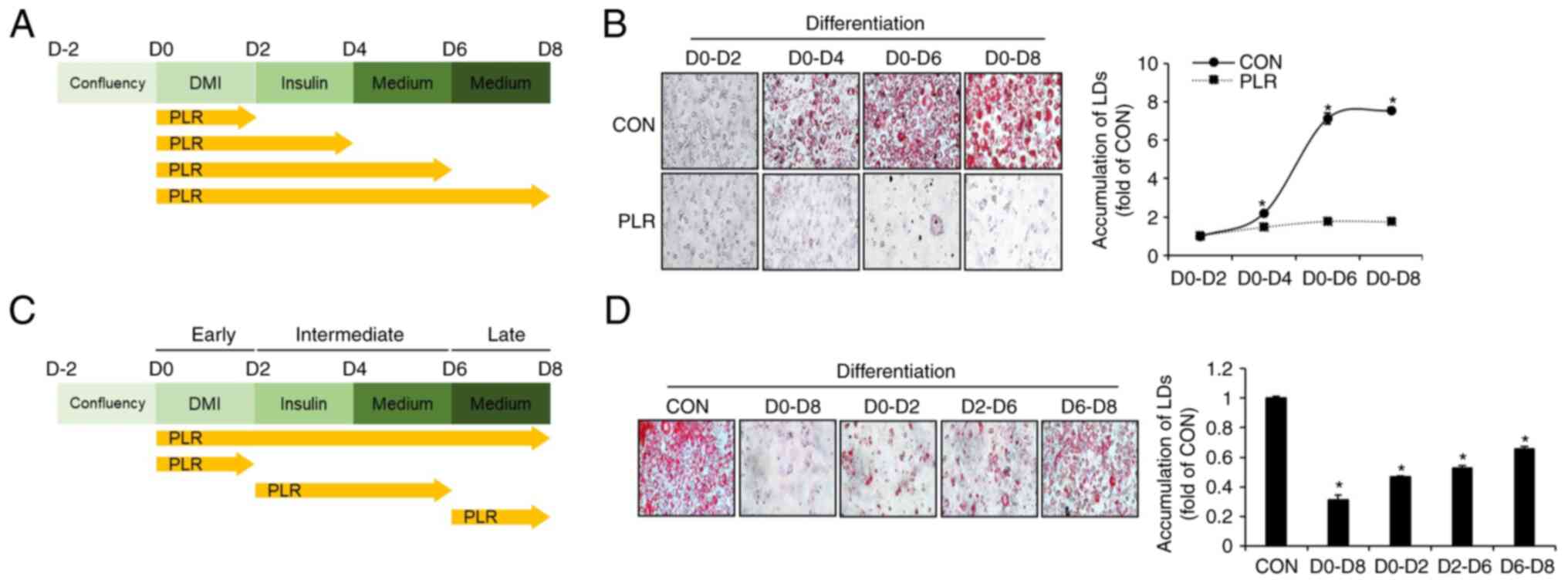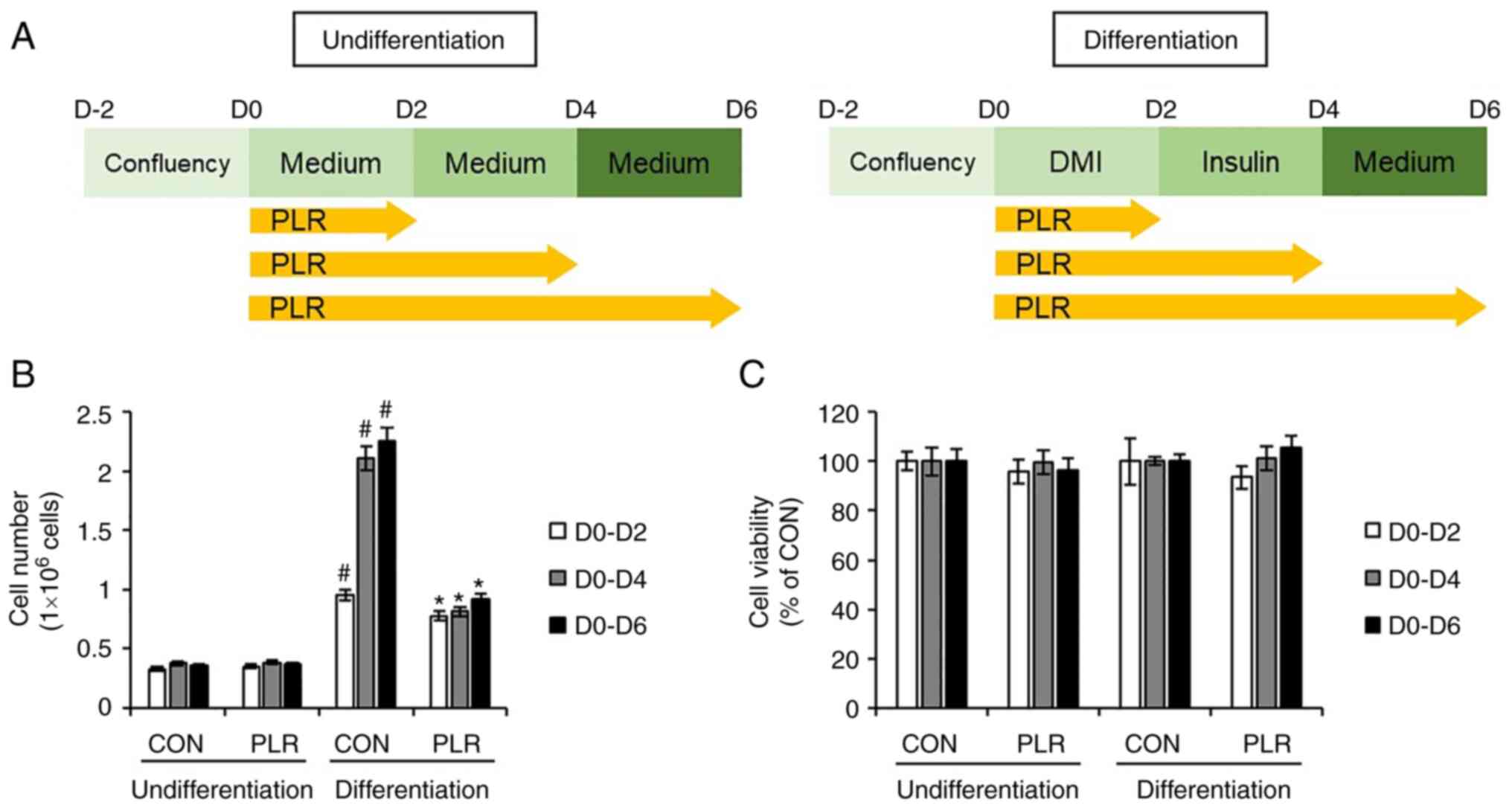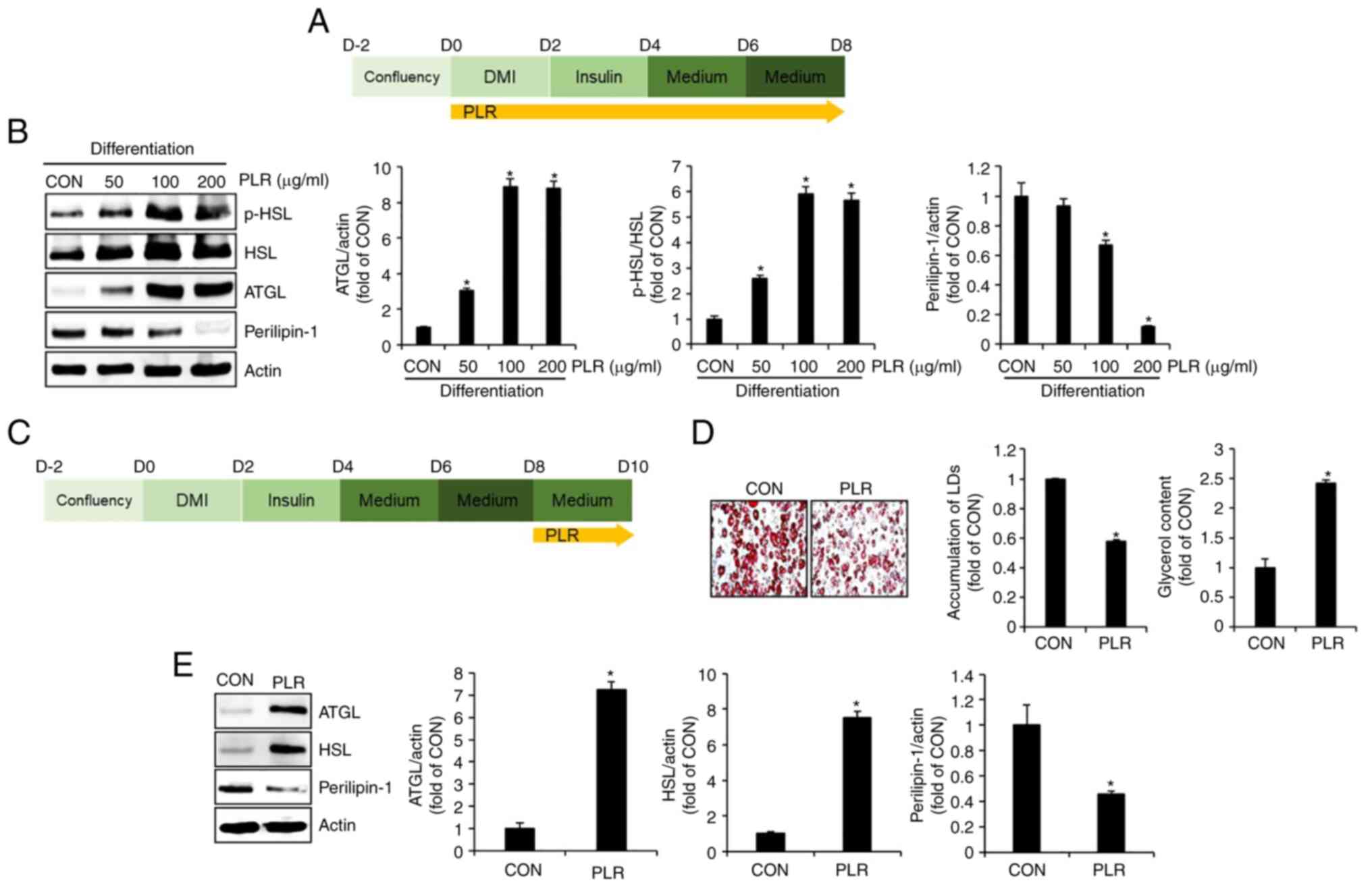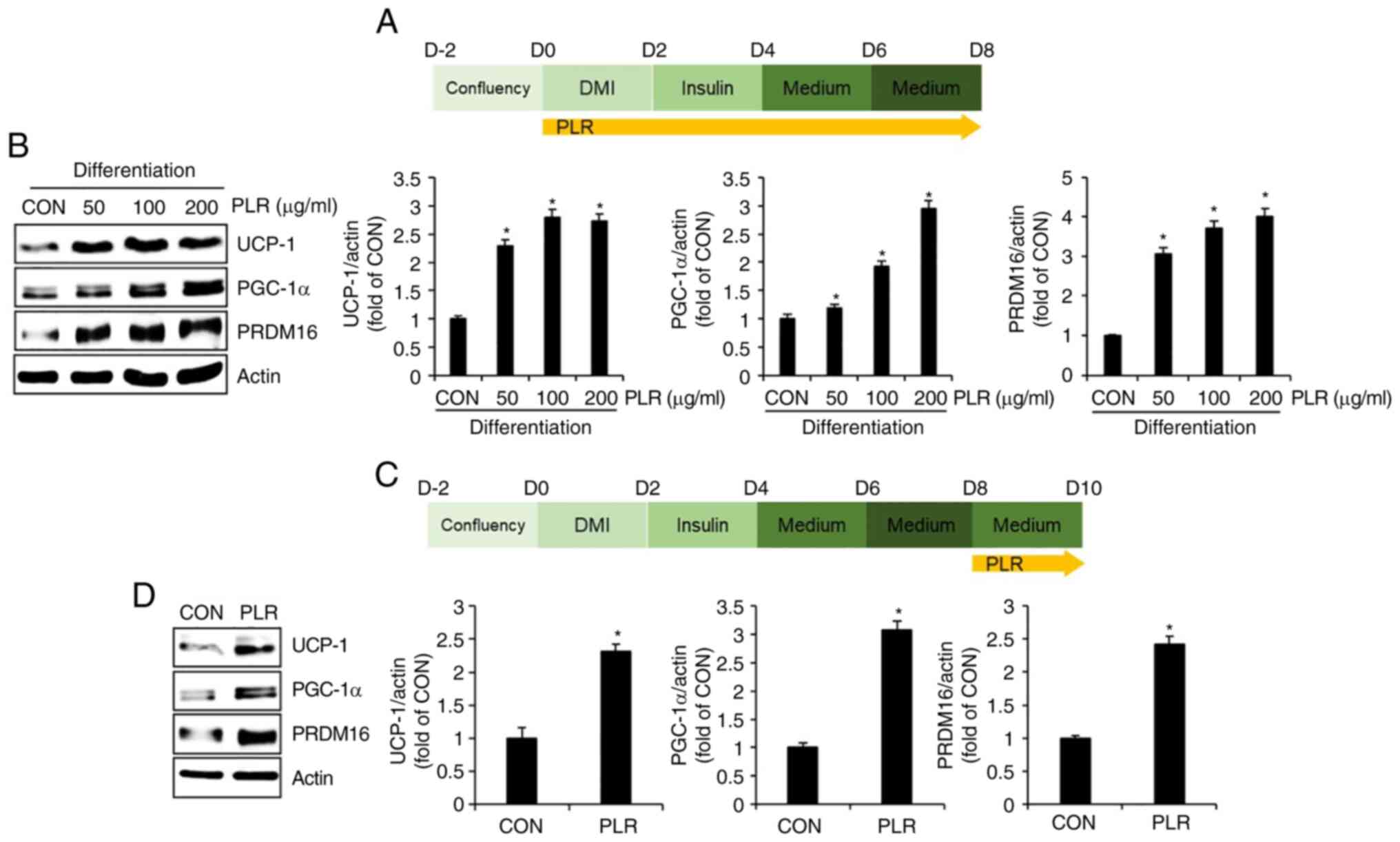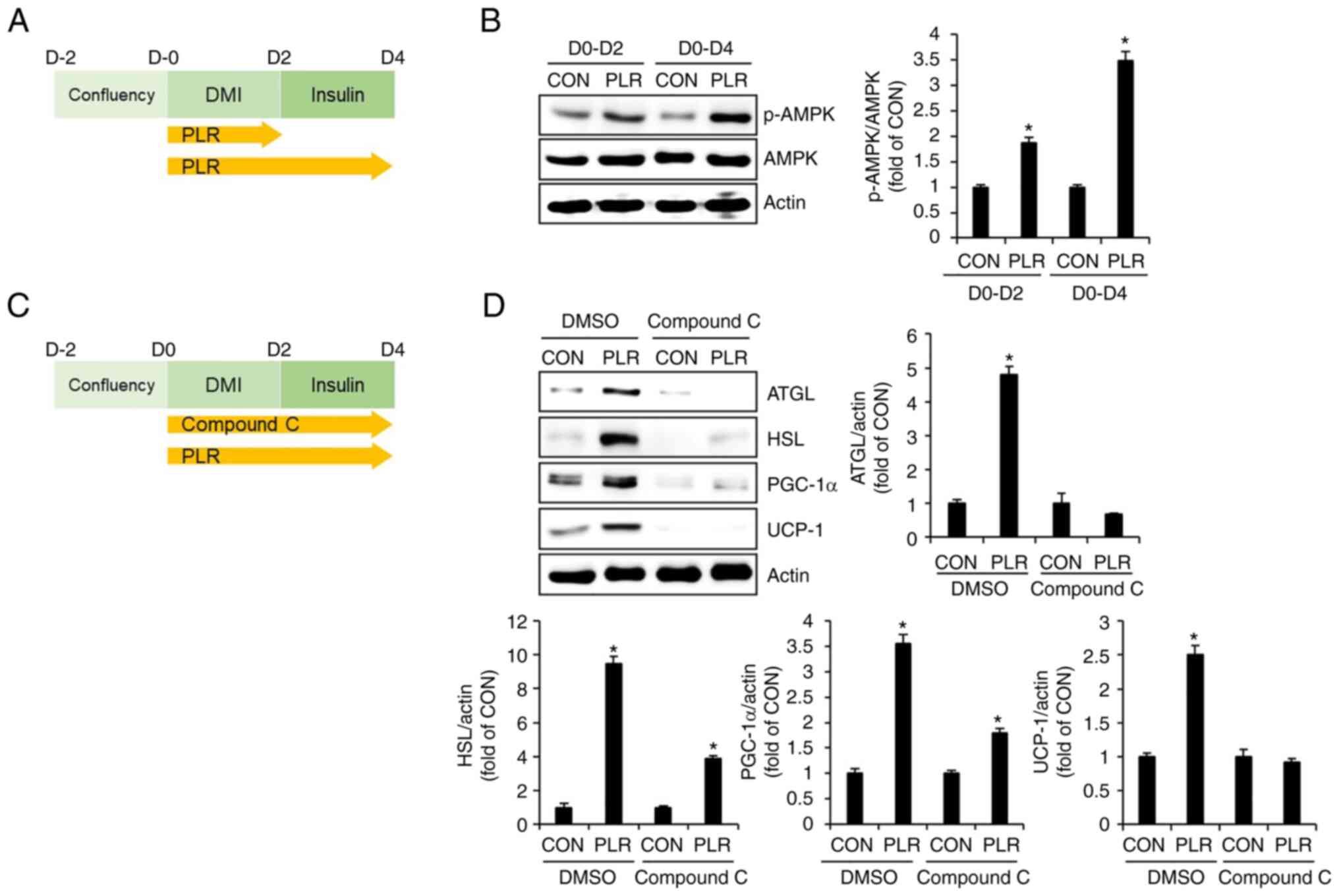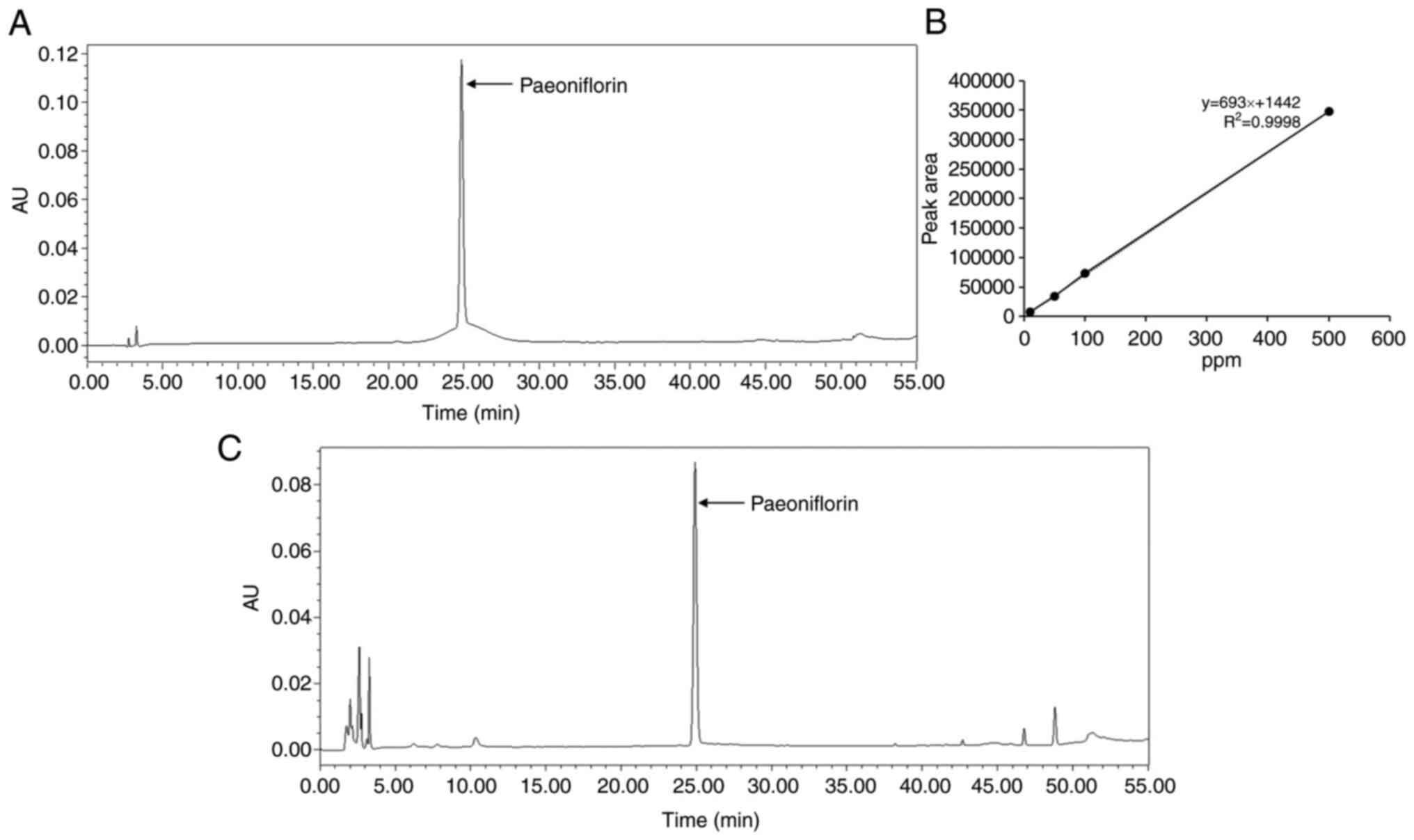|
1
|
Haslam DW and James WP: Obesity. Lancet.
366:1197–1209. 2005. View Article : Google Scholar : PubMed/NCBI
|
|
2
|
Withrow D and Alter DA: The economic
burden of obesity worldwide: A systematic review of the direct
costs of obesity. Obes Rev. 12:131–141. 2011. View Article : Google Scholar
|
|
3
|
Kang JG and Park CY: Anti-obesity drug: A
review about their effects and safety. Diabetes Metab J. 36:13–25.
2012. View Article : Google Scholar
|
|
4
|
Price S, Le QN and White ND: Lifestyle and
pharmacotherapy for weight loss in preventing or delaying diabetes.
Am J Lifestyle Med. 12:34–37. 2018. View Article : Google Scholar : PubMed/NCBI
|
|
5
|
Fu C, Jiang Y, Guo J and Su Z: Natural
products with anti-obesity effects and different mechanisms of
action. J Agric Food Chem. 64:9571–9585. 2016. View Article : Google Scholar : PubMed/NCBI
|
|
6
|
Cho YR, Lee JA, Kim YY, Kang JS, Lee JH
and Ahn EK: Anti-obesity effects of Clausena excavata in high-fat
diet-induced obese mice. Biomed Pharmacother. 99:253–260. 2018.
View Article : Google Scholar : PubMed/NCBI
|
|
7
|
He DY and Dai SM: Anti-inflammatory and
immunomodulatory effects of Paeonia lactiflora pall., a traditional
Chinese herbal medicine. Front Pharmacol. 2:102011. View Article : Google Scholar :
|
|
8
|
Choi EM and Lee YS: Paeoniflorin isolated
from Paeonia lactiflora attenuates osteoblast cytotoxicity induced
by antimycin A. Food Funct. 4:1332–1338. 2013. View Article : Google Scholar : PubMed/NCBI
|
|
9
|
Li XL, Thakur K, Zhang YY, Tu XF, Zhang
YS, Zhu DY, Zhang JG and Wei ZJ: Effects of different chemical
modifications on the antibacterial activities of polysaccharides
sequentially extracted from peony seed dreg. Int J Biol Macromol.
116:664–675. 2018. View Article : Google Scholar : PubMed/NCBI
|
|
10
|
Kim B: The activation of PPAR-α and
Wnt/β-catenin by Paeonia lactiflora root supercritical carbon
dioxide extract. J Korean Applied Sci Technol. 36:1136–1142.
2019.
|
|
11
|
Haczeyni F, Bell-Anderson KS and Farrell
GC: Causes and mechanisms of adipocyte enlargement and adipose
expansion. Obes Rev. 19:406–420. 2018. View Article : Google Scholar
|
|
12
|
Haider N and Larose L: Harnessing
adipogenesis to prevent obesity. Adipocyte. 8:98–104. 2019.
View Article : Google Scholar
|
|
13
|
Jakab J, Miškić B, Mikšić Š, Juranić B,
Ćosić V, Schwarz D and Včev A: Adipogenesis as a potential
anti-obesity target: A review of pharmacological treatment and
natural products. Diabetes Metab Syndr Obes. 14:67–83. 2021.
View Article : Google Scholar :
|
|
14
|
Sarruf DA, Iankova I, Abella A, Assou S,
Miard S and Fajas L: Cyclin D3 promotes adipogenesis through
activation of peroxisome proliferator-activated receptor γ. Mol
Cell Biol. 25:9985–9995. 2005. View Article : Google Scholar
|
|
15
|
Duncan RE, Ahmadian M, Jaworski K,
Sarkadi-Nagy E and Sul HS: Regulation of lipolysis in adipocytes.
Annu Rev Nutr. 27:79–101. 2007. View Article : Google Scholar : PubMed/NCBI
|
|
16
|
Yun JW: Possible anti-obesity therapeutics
from nature-a review. Phytochemistry. 71:1625–1641. 2010.
View Article : Google Scholar : PubMed/NCBI
|
|
17
|
Gaidhu MP, Anthony NM, Patel P, Hawke TJ
and Ceddia RB: Dysregulation of lipolysis and lipid metabolism in
visceral and subcutaneous adipocytes by high-fat diet: role of
ATGL, HSL, and AMPK. Am J Physiol Cell Physiol. 298:C961–C971.
2010. View Article : Google Scholar : PubMed/NCBI
|
|
18
|
Hansen JS, de Maré S, Jones HA, Göransson
O and Lindkvist-Petersson K: Visualization of lipid directed
dynamics of perilipin 1 in human primary adipocytes. Sci Rep.
7:150112017. View Article : Google Scholar :
|
|
19
|
Arch JRS and Trayhurn P: Detection of
thermogenesis in rodents in response to anti-obesity drugs and
genetic modification. Front Pysiol. 4:642013.
|
|
20
|
Fenzl A and Kiefer FW: Brown adipose
tissue and thermogenesis. Horm Mol Biol Clin Investig. 19:25–37.
2014.
|
|
21
|
Lee YH, Mottillo EP and Granneman JG:
Adipose tissue plasticity from WAT to BAT and in between. Biochim
Biophys Acta. 1842:358–369. 2014. View Article : Google Scholar
|
|
22
|
Song NJ, Chang SH, Li DY, Villanueva CJ
and Park KW: Induction of thermogenic adipocytes: molecular targets
and thermogenic small molecules. Exp Mol Med. 49:e3532017.
View Article : Google Scholar :
|
|
23
|
Kola B, Grossman AB and Korbonits M: The
role of AMP-activated protein kinase in obesity. Front Horm Res.
36:198–211. 2008. View Article : Google Scholar : PubMed/NCBI
|
|
24
|
Xio B, Sanders MJ, Carmena D, Bright NJ,
Haire LF, Underwood E, Patel BR, Heath RB, Walker PA, Hallen S, et
al: Structural basis of AMPK regulation by small molecule
activators. Nat Commun. 4:30172013. View Article : Google Scholar
|
|
25
|
Bu S, Yuan CY, Xue Q, Chen Y and Cao F:
Bilobalide suppresses adipogenesis in 3T3-L1 adipocytes via the
AMPK signaling pathway. Molecules. 24:35032019. View Article : Google Scholar : PubMed/NCBI
|
|
26
|
Kim K, Nam KH, Yi SA, Park JW, Han JW and
Lee J: Ginsenoside Rg3 induces browning of 3T3-L1 adipocytes by
activating AMPK signaling. Nutrients. 12:4272020. View Article : Google Scholar : PubMed/NCBI
|
|
27
|
Gao LN, Zhang Y, Cui YL and Akinyi OM:
Comparison of paeoniflorin and albiflorin on human CYP3A4 and
CYP2D6. Evid Based Complement Alternat Med. 2015:4702192015.
View Article : Google Scholar : PubMed/NCBI
|
|
28
|
Jeong MY, Park J, Youn DH, Jung Y, Kang
JW, Lim S, Kang MW, Kim HL, So HS, Park R, et al: Albiflorin
ameliorates obesity by inducing thermogenic genes via AMPK and
PI3K/AKT in vivo and in vitro. Metabolism. 73:85–99. 2017.
View Article : Google Scholar
|
|
29
|
Rabie BM and Ho JK: The mechanism of
action of Lipiburn on fat metabolism. Front Biosci. 24:427–434.
2019. View Article : Google Scholar
|
|
30
|
Ikeda N, Fukuda T, Jyo H, Shimada Y,
Murakami N, Saka M and Yoshikawa M: Quality evaluation on Paeoniae
Radix. I. Quantitative analysis of monoterpene glycosides
constituents of Paeoniae Radix by means of high performance liquid
chromatography. Comparative characterization of the external
figures, processing method and the cultivated areas. Yakugaku
Zasshi. 116:138–147. 1996. View Article : Google Scholar
|
|
31
|
Yoo JS, Song MC, Ahn EM, Lee YH, Rho YD
and Baek NI: Quantitative analysis of paeoniflorin from Paeonia
lactiflora using 1H-NMR. Nat Prod Sci. 12:237–240.
2006.
|















